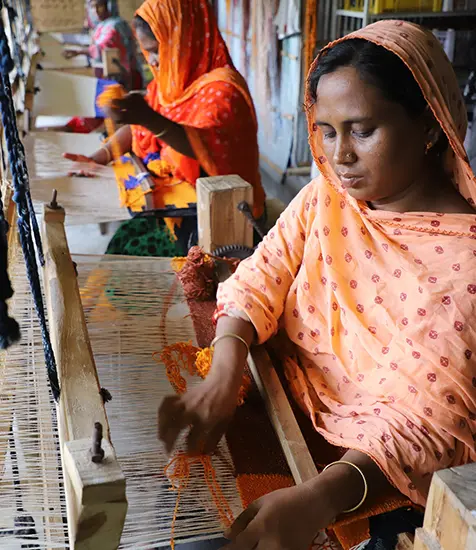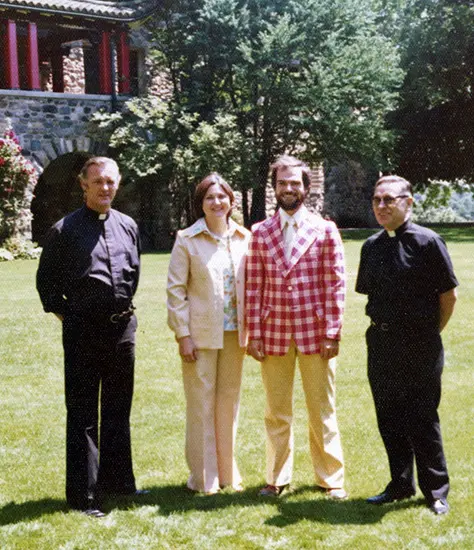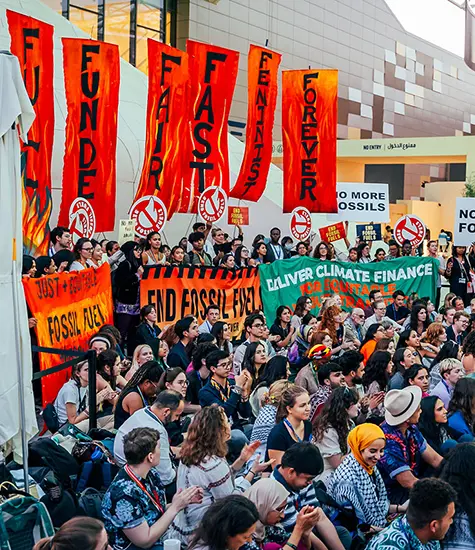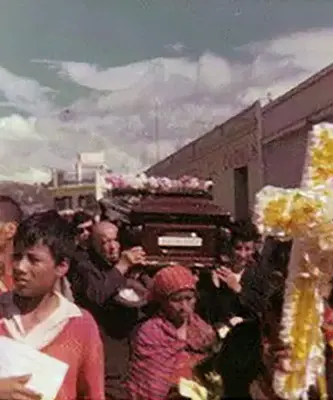
Mary Sue Smiaroski worked on Oxfam’s “Women’s Precarious Employment” campaign. In this Oxfam photo from Bangladesh, Monjuara Begum is weaving a rug in a home factory in Rangpur, Bangladesh. (Photo by Mutasim Billah / ©Oxfam)
I was volunteering in the Dominican Republic in 1983 when I attended a ceremony commemorating the four U.S. church women who had been killed in El Salvador. That awful event was what set me on my path of looking into liberation theology and base communities, and what eventually led me to becoming a Maryknoll lay missioner.
To be honest, the first time I came to Maryknoll (after I had been invited for an interview), driving up to the “castle,” I thought, “Oh my God. I’m in the wrong place.” I had lived in this little tiny shed in the Dominican Republic in the countryside, and seeing that grand building, I almost turned right around.
But when I walked in, there on the right-hand side, were the books from Orbis — James Cone’s A Black Theology of Liberation and Gustavo Gutiérrez’s A Theology of Liberation. That kept me going, and then when they took me down to Bethany House, where the lay missioners were, Maryknoll began to make sense.
We had a four-month orientation and formation program at the time. Our Class of 1985 was the biggest class that Maryknoll lay missioners ever had. We were 31 people — plus 11 kids! I remember having so many deep reflections and conversations about what our faith meant in practice. I was pretty outspoken when we were going through Orientation, so, as a joke, someone put a little sign on my door, “Resident revolutionary.”
Five of us were sent to Chile, with two of us going to the Northern Zone of Santiago, the periphery of the sprawling capital city. I was asked to work with Father Tom Henehan and, at that time, Father Terry Cambias. They were just starting the Center for Pastoral Reflection, which was all about training and forming laity for bigger roles both within the church and in the larger world.
We used the popular education techniques of Paulo Freire, and we were training people from parishes and base communities in a different way of reading the Bible, of understanding what it meant to be “church.” People learned about group dynamics and conflict resolution, and together they learned to reflect on what was happening in their lives and in their impoverished neighborhoods. We were facilitating, animating and bringing people together in a context where the dictatorship was the dominant crisis of their lives, with implications related to human rights, their economic situation and their ability to engage civically.
More laity began to take leadership positions in our parish, and I engaged with young people who hadn’t really felt the church was a place for them to share this different way of being church.
I also worked with a small group of Maryknoll people — priests, sisters and lay missioners — to write a human rights update on events in Chile every month. It was a little dangerous, but we were sending it out of Chile to Maryknoll’s justice and peace office to support its advocacy efforts in Washington, D.C.; they circulated it to other allies, including the Washington Office on Latin America.
Some of us were members of the Sebastián Acevedo Movement Against Torture, which did lightning demonstrations against torture in Chile; it was a movement organized and led by laity, and included nuns and priests from all across the city of Santiago, supporting people willing to protest, through nonviolent means, their commitments to human rights and justice, and demand the same from the authoritarian government at the time.
I had served for seven years as a Maryknoll lay missioner when Oxfam approached me about applying for a job to work with them in a new office they had opened up in Chile after the end of the dictatorship. I don’t even know how my name had come to their attention. They gave me the job, and so I worked another 10 years with them in Chile, until in 2002 I came back to the U.S. — and then went on to Canada to work for Oxfam from there.
In my now 32 years with Oxfam, I’ve always worked on programs and projects and advocacy that prepare and help people assume roles that will enable them to change their own lives and their communities. And now, in the last part of my career, since 2008, I have been working on monitoring, evaluation, and learning.
Like the church, the international development community has a very colonial history that’s not so happy. We have had to learn to do things very differently. And like Maryknoll, the people at Oxfam are passionate about effecting change and are working to change a particular institution that has its baggage to open up space for liberation.
To me, such liberating work is closely following the mandate of Jesus to build what Martin Luther King Jr. called the “beloved community” founded on a vision of a just world. That’s what I felt like we were doing at Maryknoll — and what we are also similarly doing at Oxfam.
One of the highlights of my work with Oxfam has been a focus on “women’s precarious employment.” As part of Oxfam’s Make Trade Fair campaign, we worked with campaigns led by women’s rights organizations in 22 different countries to draw attention to women and their community organizations fighting for women worker’s rights. Each country had their particular issue that they had identified as an opportunity to advance — policy or practical changes that had to do with getting women out of precarious employment and into stable employment that was recognized legally and that paid a minimum wage with health benefits and things like that.
A second highlight for me has been my more recent work on knowledge and learning. It involves Oxfam teams, with partners (national or community organizations) framing explicit questions about what they need to know to make progress towards the type of change they are seeking, then figuring out how to find the answers to those questions and sharing them with others. What do you learn from what you’re doing and how do you use that outside of your team and then influence our sector of international development?
For example, one of the learning questions might be: How is women’s journey to leadership in their community different from men’s journey to leadership? And so once you learn that: How can you help your teams and the partners that you work with be more effective in supporting women to become leaders in their community?
I’m part of a team that developed this system as an experiment within Oxfam of centering our learning around specific learning questions, looking for answers to the questions by using different sources of evidence to get the answers, and then sharing and using the evidence to influence social change. It is part of a 10-year global strategic framework that we started five years ago. We work with Oxfam colleagues in many different countries who in turn work with partners and communities to do this work.
Having been through the experience in Maryknoll changes you, and you can never get changed back. You are forever changed, and that’s a good thing.
When the 25th anniversary of the Maryknoll Mission Association of the Faithful came up, it was in the middle of the pandemic, so there was no possibility of a reunion. Our class began organizing group phone calls every three or four months, and it has been great to reconnect.
We have a great Maryknoll returned-lay-missioner community across the United States, and you have to find a community like that to be able to have the strength to effectively work for change — and to live the Gospel outside the margins of what’s traditionally done in church.









